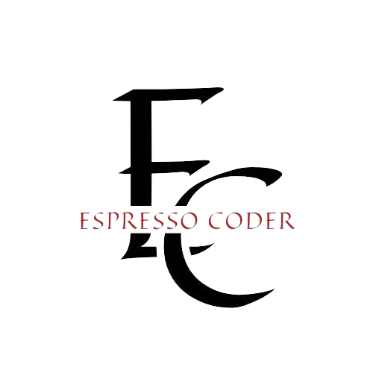Contents
Quick answer
The Jkuhrl-5.4.2.5.1j model is a real-time data processing framework that leverages machine learning algorithms to ingest, analyze, and act on data streams dynamically. It’s designed for high-throughput environments and excels in speed, adaptability, and predictive analytics.
What Is the Jkuhrl-5.4.2.5.1j Model?
In an era of data-driven decisions, traditional batch processing systems can’t keep up with the growing demand for real-time insights. That’s where the Jkuhrl-5.4.2.5.1j model stands out. As a flexible, ML-enabled data processing framework, it helps organizations process, analyze, and act on massive datasets in the moment.
Whether you’re managing user behavior data, IoT sensors, financial transactions, or cybersecurity logs, this model offers high-speed analytics capabilities—without sacrificing accuracy.
In short: If you’re seeking a scalable, AI-powered system for real-time data environments, this model could be the game-changer.
Key Facts Table
| Feature | Details |
|---|---|
| Model Name | Jkuhrl-5.4.2.5.1j |
| Category | Data Processing Framework |
| Main Strength | Real-time analysis with ML integration |
| Use Cases | IoT, Finance, Cybersecurity, SaaS telemetry |
| Update Mechanism | Streaming + Dynamic Learning |
| Programming Support | Python, Scala, Java, C++ |
| Open Source | No (proprietary license, but API extensible) |
| Main Competitors | Apache Flink, Spark Structured Streaming, Kafka |
| Real-Time Capable | Yes |
| ML Integration | Yes (supports model training and inference) |
How the Jkuhrl-5.4.2.5.1j Model Works
Streaming Data First
The model thrives on continuous streams of incoming data. Unlike systems that wait for a complete batch before analysis, Jkuhrl-5.4.2.5.1j processes data as it arrives.
- Event-driven architecture
- Minimal latency for ingestion
- Optimized for distributed systems
This makes it ideal for environments like online fraud detection, social media sentiment analysis, and telemetry in connected devices.
Built-in Machine Learning
The model is tightly coupled with ML features:
- Pre-trained model loading
- Real-time inference pipelines
- Dynamic retraining from new data points
This integration allows businesses to predict rather than just react. Think predictive maintenance in manufacturing or real-time customer segmentation in eCommerce.
Key Features of the Jkuhrl-5.4.2.5.1j Framework
1. Scalability Across Infrastructure
Whether running on a single server or across a multi-cloud cluster, the model is built for scalability.
- Auto-sharding and parallel task execution
- Kubernetes and Docker support
- Works with AWS, GCP, Azure
2. Real-Time Decision Support
Decisions based on real-time data reduce risk and improve responsiveness.
- Rule-based decision engines
- ML-driven recommendations
- Action triggers on threshold events
3. Modular Architecture
Its architecture is modular, making it extensible for custom solutions.
- Pluggable input connectors (Kafka, MQTT, WebSockets)
- Modular processors (transforms, enrichments, filters)
- Output writers (SQL, NoSQL, Data Lakes, REST APIs)
Use Cases for Jkuhrl-5.4.2.5.1j
IoT and Edge Devices
Sensor data from devices often needs to be processed on-the-fly. The model’s real-time processing is perfect for:
- Smart home devices
- Connected cars
- Industrial automation
Cybersecurity
Analyzing logs and packet data in real-time can help detect intrusions early.
- Behavior-based threat detection
- IP anomaly tracking
- Live response automation
Financial Services
In finance, milliseconds matter.
- Fraud detection during payment authorization
- Algorithmic trading systems
- Customer risk profiling
Comparisons: Jkuhrl vs Other Frameworks
Jkuhrl-5.4.2.5.1j vs Apache Flink
| Feature | Jkuhrl-5.4.2.5.1j | Apache Flink |
|---|---|---|
| ML Native Support | Yes | Via external libraries |
| Built-in Inference | Yes | Limited |
| Licensing | Proprietary | Open Source (Apache) |
| Deployment | Cloud-native optimized | Kubernetes supported |
Jkuhrl-5.4.2.5.1j vs Kafka Streams
| Feature | Jkuhrl-5.4.2.5.1j | Kafka Streams |
|---|---|---|
| ML Integration | Built-in | Manual integration |
| Fault Tolerance | Built-in recovery | Depends on setup |
| Ease of Use | API + UI | Code-only |
Pros and Cons
Pros
- Real-time ML pipeline integration
- Low-latency streaming performance
- Extensible architecture
- Multilingual SDKs available
Cons
- Not open source (limited transparency)
- Smaller developer community compared to Apache tools
- Proprietary licensing may limit enterprise adoption
Conclusion: Should You Use Jkuhrl-5.4.2.5.1j?
If your business relies on making fast decisions from live data streams, the Jkuhrl-5.4.2.5.1j model is a strong candidate. With built-in ML capabilities, support for distributed environments, and fast ingestion, it bridges the gap between data collection and action.
FAQs
What is the Jkuhrl-5.4.2.5.1j model used for?
It’s used for real-time data processing with machine learning in finance, IoT, and cybersecurity.
Is Jkuhrl-5.4.2.5.1j open source?
No, it’s a proprietary model, but offers API access and SDKs for integration.
Does it support machine learning?
Yes, it allows pre-trained model loading, real-time inference, and dynamic retraining.
How is it different from Apache Flink?
Jkuhrl offers tighter ML integration and proprietary optimizations for latency and throughput.
What programming languages are supported?
It supports Python, Java, Scala, and C++ via SDKs.
Can I use Jkuhrl in cloud deployments?
Yes, it’s optimized for Kubernetes and multi-cloud deployments across AWS, Azure, and GCP.

